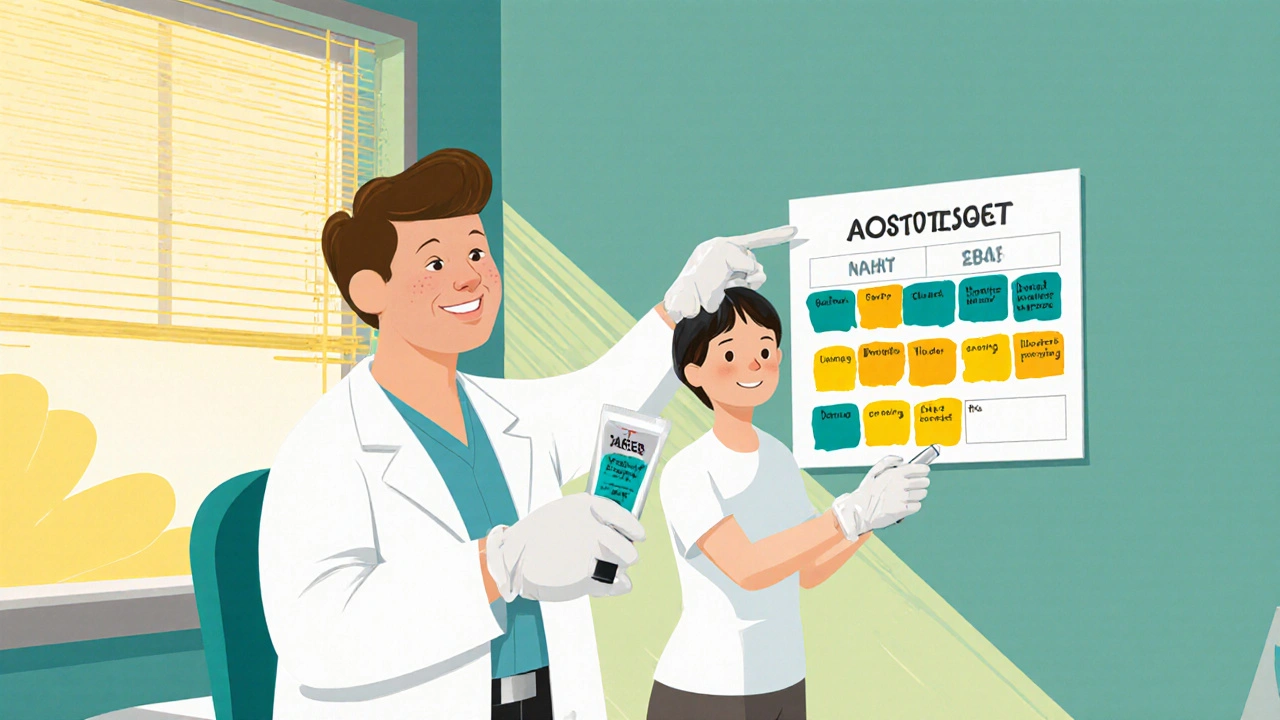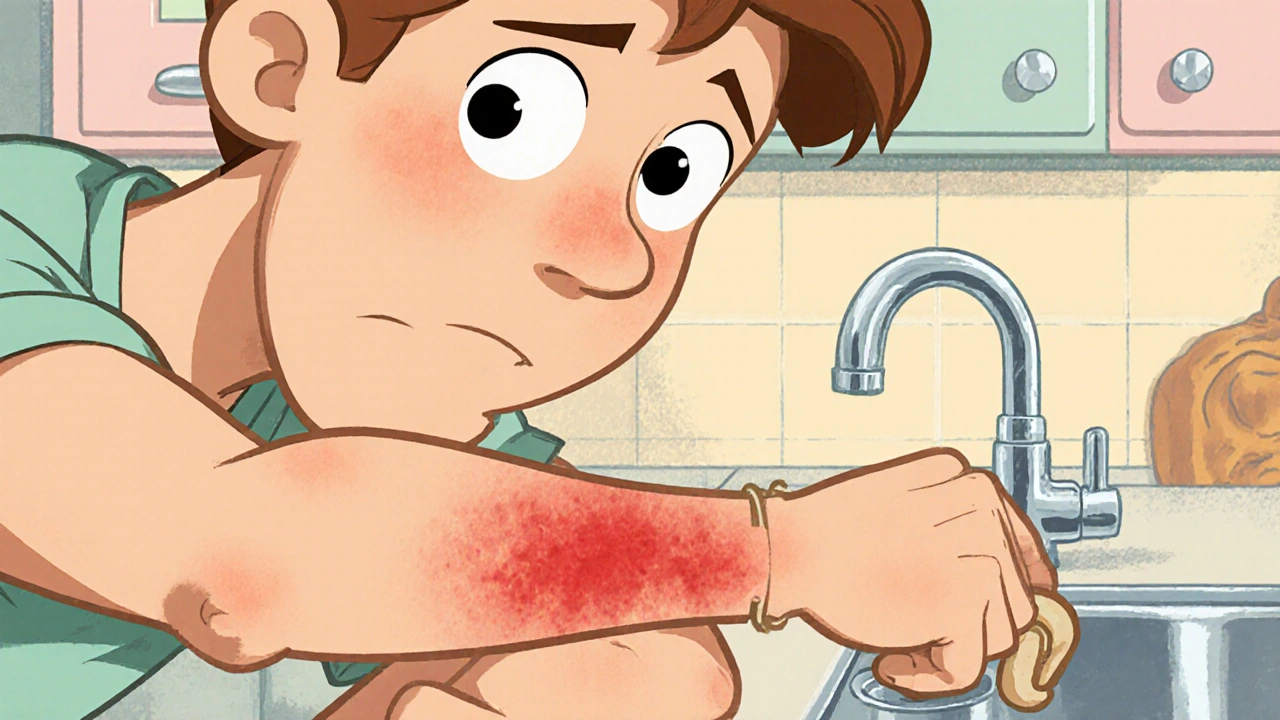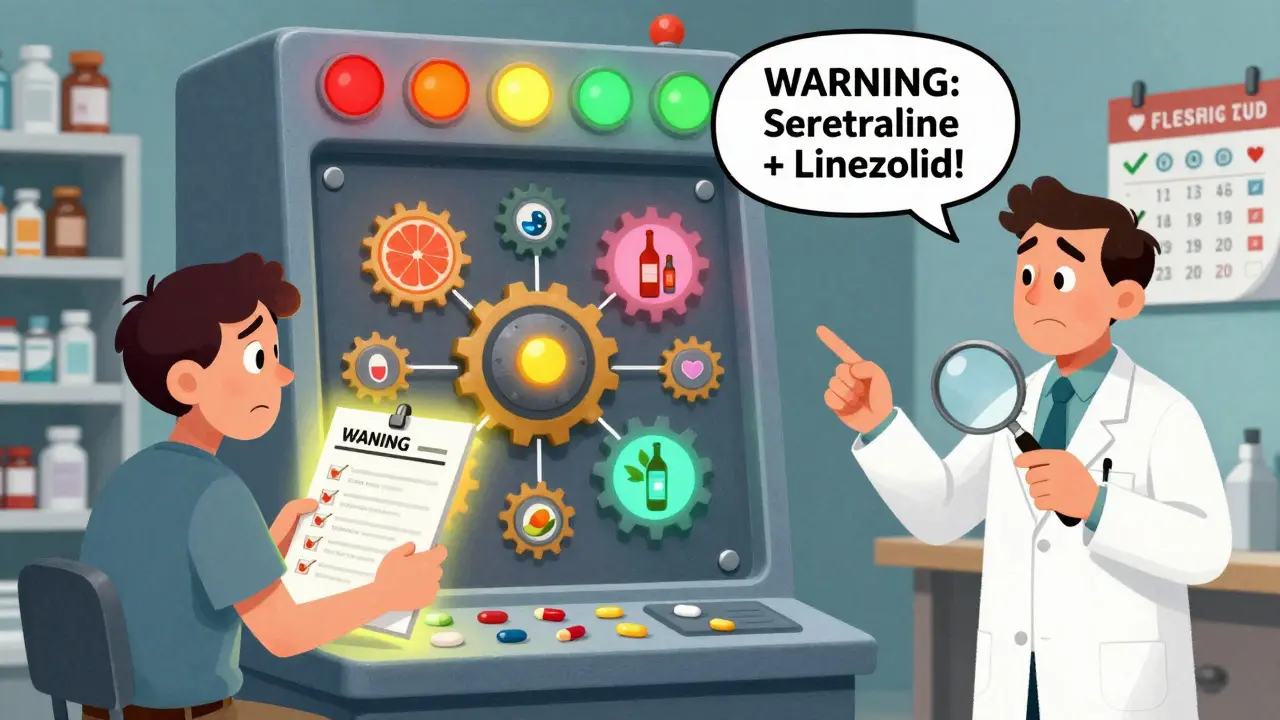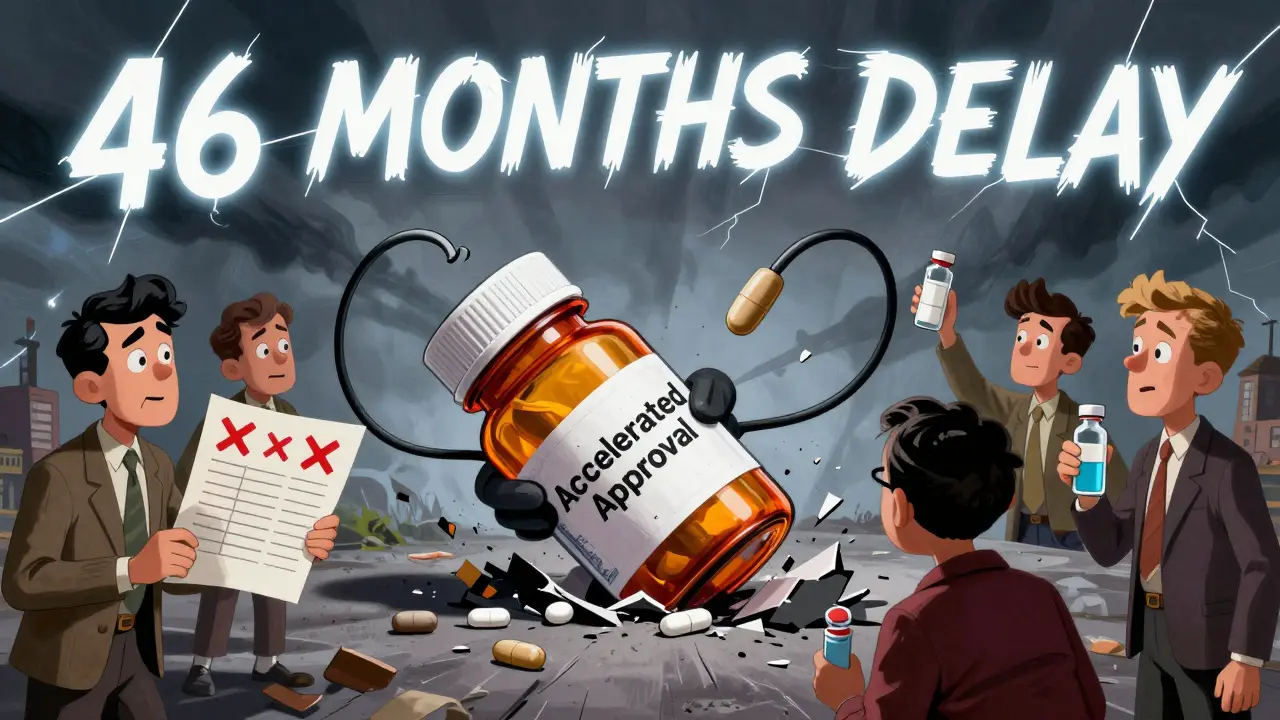Contact Dermatitis Treatment Assistant
How to Use This Tool
Answer these questions to receive personalized recommendations for contact dermatitis treatment. This tool is designed for mild to moderate cases only.
Your Treatment Recommendation
After you select options, your personalized treatment plan will appear here.
Contact Dermatitis Types
Irritant Dermatitis
Caused by direct skin damage from harsh substances (cleaners, chemicals)
- Common triggers: Soaps, detergents, solvents
- Symptoms usually start immediately after exposure
Allergic Dermatitis
Caused by immune reaction to specific allergens
- Common triggers: Nickel, fragrances, latex
- Symptoms often appear 24-48 hours after exposure
When a seemingly harmless material leaves your skin red, itchy, and uncomfortable, you’re probably facing a case of contact dermatitis. This guide walks you through the quickest ways to calm the flare, choose the right products, and stop the cycle before it returns.
What Exactly Is Contact Dermatitis?
Contact dermatitis is a type of skin inflammation that appears after direct exposure to an irritant or an allergen. It can show up as dry patches, swelling, or a burning sensation. The condition is split into two main forms:
- Irritant dermatitis occurs when a harsh substance damages the skin’s protective barrier.
- Atopic dermatitis (or allergic contact dermatitis) happens when your immune system reacts to a specific allergen.
Both share the same symptoms, but the triggers differ. Knowing which one you have helps you pick the right treatment.
First‑Aid Steps You Can Take Right Now
When the rash first appears, act fast to minimize damage. Follow these three steps before you reach for any cream:
- Rinse the area with lukewarm water for at least 15 seconds. Avoid hot water-it can worsen inflammation.
- Gently pat the skin dry with a soft towel. Rubbing can further irritate the skin.
- Apply a thin layer of a fragrance‑free emollient or moisturizer within three minutes. This restores moisture and reduces itching.
Doing this within the first hour can cut the intensity of the rash by up to 40% according to a 2023 dermatology study.
Home Remedies That Actually Work
Natural options can be a gentle bridge between over‑the‑counter meds and prescription strength. Here are the most proven ones:
- Cold compress: Apply a clean, damp cloth chilled in the refrigerator for 10‑15 minutes. The cold constricts blood vessels, easing swelling.
- Aloe vera gel: Use 100 % pure aloe, which contains anti‑inflammatory compounds that calm redness.
- Oatmeal baths: Add colloidal oatmeal to lukewarm bath water for a soothing soak. Oat’s beta‑glucan fibers lock in moisture and reduce itch.
- Apple cider vinegar (diluted): Mix one part vinegar with three parts water and dab gently. Its mild acidity can neutralize certain irritants, but avoid if the skin is raw.
Remember, a home remedy is only a symptom manager. If the rash spreads or worsens after 48 hours, move on to the next step.

Over‑the‑Counter Options & How to Choose
| Product Type | How It Works | Typical Use | Pros | Cons |
|---|---|---|---|---|
| Topical corticosteroids | Reduce inflammation by suppressing histamine release | Apply 1‑2 times daily for up to 7 days | Fast relief, widely available | Possible skin thinning with prolonged use |
| Antihistamine creams | Block itch signals at nerve endings | Use after flare subsides, up to 2 weeks | Gentle, non‑steroidal | May cause mild local irritation |
| Moisturizing ointments | Seal in moisture, repair skin barrier | Apply 2‑3 times daily, indefinitely | Safe for long‑term use, inexpensive | May feel greasy |
For mild cases, a moisturizing ointment like petroleum jelly combined with a fragrance‑free emollient may be enough. Moderate to severe flare‑ups often need a low‑potency corticosteroid such as 1 % hydrocortisone.
When to Seek Professional Help
Even the best home care won’t replace a doctor’s judgment when certain red flags appear. Schedule a dermatology appointment if you notice any of the following:
- Blisters, weeping skin, or pus
- Spread beyond the initial contact area within 48 hours
- Fever, chills, or swollen lymph nodes
- Symptoms persisting longer than two weeks despite treatment
A dermatologist may prescribe a stronger corticosteroid, oral antihistamines, or even immunomodulators. They can also perform patch testing to pinpoint the exact allergen responsible.
Long‑Term Prevention Strategies
Stopping contact dermatitis at the source is the smartest move. Follow these practical habits:
- Identify triggers: Keep a diary of products you use and note any reactions. Common culprits include nickel, fragrances, latex, and certain cleaning agents.
- Choose gentle alternatives: Opt for mild soap or syndet bars, cotton gloves for cleaning, and hypo‑allergenic cosmetics.
- Protect the skin barrier: Apply a thick emollient before any potential exposure (e.g., before gardening or using household cleaners).
- Use occlusive dressings wisely: For persistent irritation, a breathable occlusive bandage can lock in medication and keep irritants out.
- Regular skin checks: If you have a history of atopic dermatitis, see a dermatologist annually to monitor skin health.
These steps reduce the chance of future flare‑ups by up to 70 % for people who stay consistent.

Putting It All Together: A Sample 7‑Day Relief Plan
Here’s a concrete schedule you can copy‑paste into your phone reminder app:
- Day 1: Rinse, pat dry, apply fragrance‑free emollient; cold compress for 10 min.
- Day 2‑3: Add 1 % hydrocortisone cream twice daily; continue moisturising after each wash.
- Day 4‑5: Switch to a gentle antihistamine cream if itching persists; keep using emollient.
- Day 6‑7: Discontinue steroids, maintain moisturizer, monitor for new rash.
If any day brings worsening symptoms, call your doctor right away.
Quick Checklist for Immediate Relief
- Rinse with lukewarm water
- Pat dry, don’t rub
- Apply fragrance‑free emollient within 3 minutes
- Cool compress for itching
- Use 1 % hydrocortisone if needed (max 7 days)
- Keep a trigger diary
- Schedule a dermatologist visit if red flags appear
Frequently Asked Questions
Can I use regular sunscreen on a contact dermatitis flare?
Choose a mineral‑based sunscreen without fragrance or alcohol. Apply a thin layer after the skin has dried from your moisturizer. If you notice more redness, stop using it and talk to a dermatologist.
Is it safe to use baby oil on irritated skin?
Baby oil can trap heat and worsen inflammation, especially on broken skin. Stick with ointments that contain petroleum jelly or ceramides.
How long does it take for a rash to disappear?
Mild irritant dermatitis may clear in 3‑5 days with proper care. Allergic forms can linger 2‑3 weeks, especially if the trigger isn’t removed.
Can I wash my hands with antibacterial soap during a flare?
Avoid antibacterial soaps that contain triclosan or strong fragrances. Use a mild, pH‑balanced cleanser instead.
Do oral antihistamines help with contact dermatitis?
They can reduce itching if the rash is driven by an allergic reaction, but they won’t cure the inflammation itself. Pair them with topical treatments for best results.







Rajesh Singh
Listen up, folks-if you keep slapping any random chemical on your skin without a second thought, you’re practically signing a contract with irritation. The guide nails the science, but the real moral is simple: respect the barrier you were born with, or you’ll be paying the price in red, itchy flare‑ups. Treat your skin like a priceless artifact, not a disposable napkin.
Albert Fernàndez Chacón
That’s a solid point. I’ve found that rinsing with lukewarm water right away does wonders, especially when you pair it with a fragrance‑free moisturizer. Keeping it simple and consistent often beats any fancy remedy.
Drew Waggoner
Honestly, the whole “cold compress” thing feels like a gimmick until you’ve actually tried it on a burning patch. The sting subsides, but the lingering itch can still drive you mad.
Mike Hamilton
i totally get wht you’re sayin. cold compresses can be a real lifesaver, but if u keep using hot water after, u just undo the work. its like trying to fix a leaky pipe with a hammer – just dont do it. also, remember to keep a gentle cloth handy, not a rough towel, else u’ll irritate more.
Liberty Moneybomb
What they don’t tell you is that the “fragrance‑free” label is a massive cover‑up orchestrated by the big chemical lobby. They sprinkle hidden irritants into every “safe” product to keep us dependent on their endless cycle of soothing creams and doctor visits. Wake up, people!
Alex Lineses
Let’s keep the focus on practical steps while we stay aware of broader industry practices. Opt for certified hypo‑allergenic brands, check the ingredient list for hidden allergens, and maintain a consistent moisturizing routine. This balanced approach empowers you without fostering paranoia.
Brian Van Horne
Rinse, moisturize, repeat – that’s all you need.
Karla Johnson
When it comes to contact dermatitis, the first lesson is to recognize that your skin is an active, responsive organ-not a passive sheet of tissue waiting for a chemical onslaught. The moment an irritant breaches the barrier, a cascade of inflammatory mediators flood the area, triggering the classic redness, swelling, and itching that we all dread. Understanding this cascade helps you appreciate why immediate first‑aid measures, such as lukewarm rinsing, are not just ritual but a scientifically backed interruption of the inflammatory loop. By flushing the irritant away within seconds, you dramatically reduce the amount of antigen that can bind to skin proteins and present to immune cells. This is why the guide emphasizes a three‑minute window for applying a fragrance‑free emollient – it seals the freshly cleansed barrier before it dries out and cracks. Moreover, the choice of moisturizer matters: ceramide‑rich ointments not only hydrate but also replenish the lipid matrix that your skin lost during the insult. Skipping this step is akin to patching a roof with a tarp and expecting it to withstand a storm. The home remedies listed, such as oatmeal baths and diluted apple cider vinegar, each bring a unique mechanism; oatmeal’s beta‑glucans soothe itch by modulating nerve signals, while vinegar’s mild acidity can neutralize alkaline irritants, provided the skin isn’t raw. However, none of these should be viewed as a cure‑all. If the rash spreads beyond the initial contact site within 48 hours, or if blisters appear, you have crossed the threshold into a more severe reaction that demands medical attention. Over‑the‑counter options, especially low‑potency corticosteroids like 1 % hydrocortisone, act by dampening the inflammatory response at the genetic level, but they carry a risk of skin thinning with prolonged use. That risk underscores the importance of the guide’s recommendation to limit steroid use to a maximum of seven days. For chronic sufferers, the long‑term prevention strategies-keeping a trigger diary, using protective gloves, and selecting hypo‑allergenic products-form the backbone of a sustainable management plan. By integrating these habits into daily life, you can cut down future flare‑ups by up to 70 %, a statistic that should motivate any diligent reader. In short, the roadmap is clear: immediate cleansing, barrier restoration, judicious use of medicated creams, and vigilant avoidance of known triggers. Follow those steps, and you’ll transform a frustrating skin battle into a manageable routine.
Matthew Miller
Wow, that breakdown was a masterclass in skin science-seriously, I feel like I just earned a PhD in dermatitis management! Your advice on sealing the barrier with ceramides and keeping a trigger diary is pure gold. I’m going to set a reminder on my phone right now and actually stick to the seven‑day steroid limit. Thanks for turning a messy problem into a clear game plan.
Norman Adams
Oh great, another “step‑by‑step” guide that pretends the world’s biggest skin woes can be solved with a dab of moisturizer. Sure, if you’ve got endless time to chase after every little irritant, why not?
Janet Morales
Honestly, I think the whole “avoid all triggers” mantra is a power play by the beauty industry to keep us buying endless “hypo‑allergenic” products. Real freedom comes from embracing the skin’s natural resilience, not from coddling it with lotions. If you keep feeding it fear, you’ll never break the cycle.
Ayla Stewart
I appreciate how the guide balances immediate relief with long‑term prevention, especially the emphasis on a simple trigger diary. It’s a practical tool that many overlook, yet it can make a huge difference in identifying hidden culprits.
Poornima Ganesan
Let’s be frank: most people who ignore the basics in this article are simply lazy. They skip the rinse, they slap on any random cream, and then wonder why the rash worsens. The science is clear-wash, moisturize, protect, repeat. If you can’t follow that, you’re not going to see results.